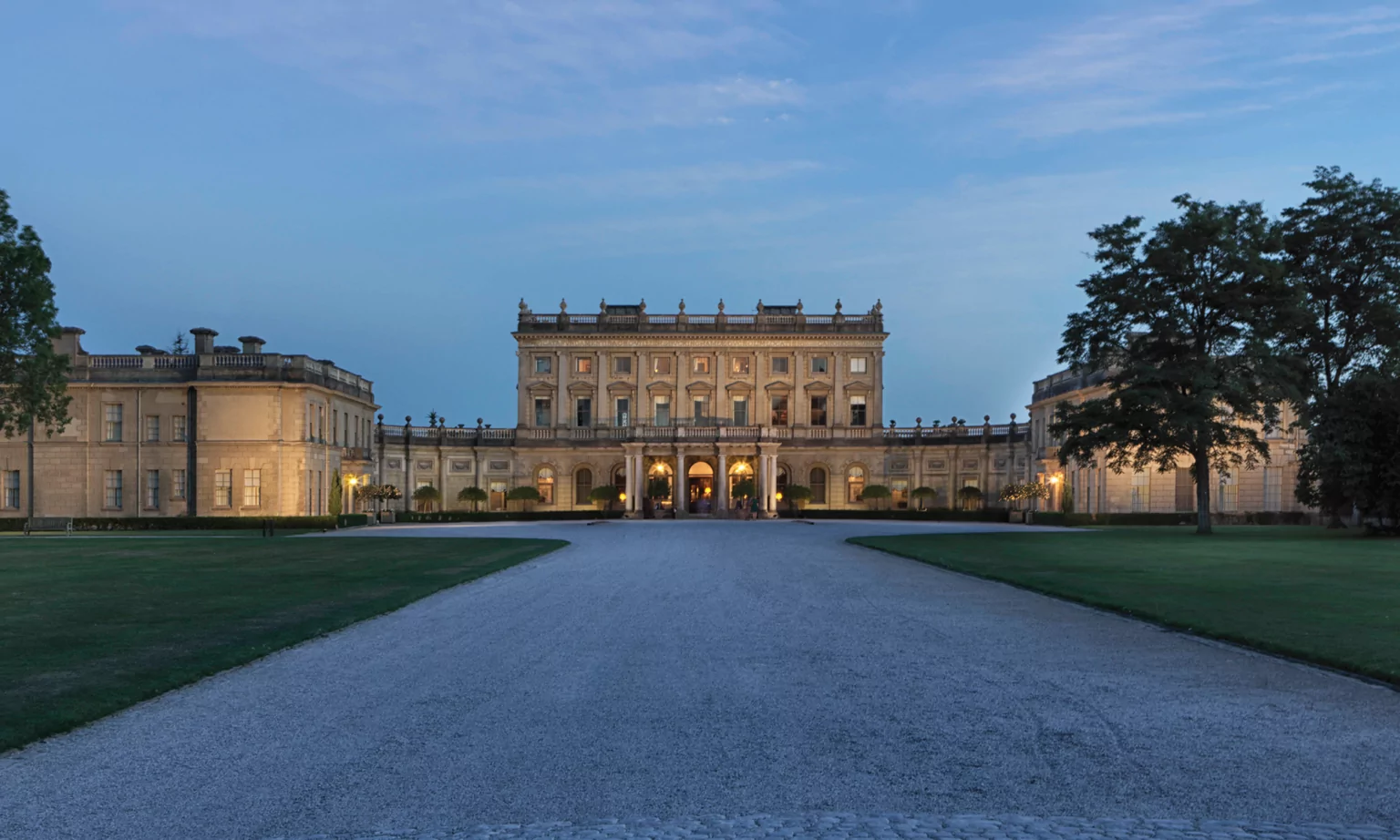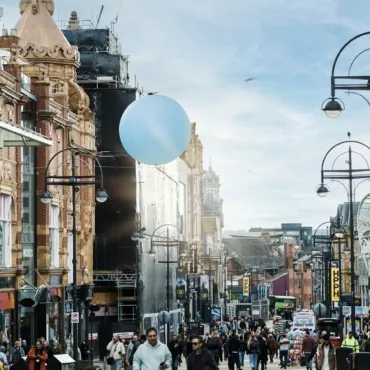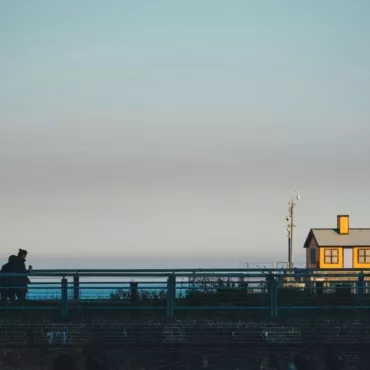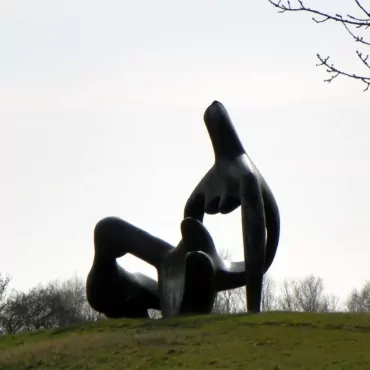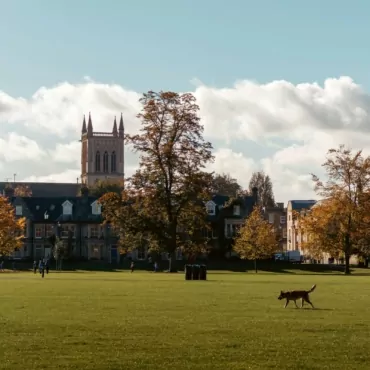Houses with history
Hever Castle, Kent.

Where: Hever Rd, Hever, Edenbridge TN8 7NG
You can plan your visit online.
Two hours from London rises the picturesque and very cozy Hiver Castle, closely connected with the life of Anne Boleyn and her family. The future Queen Consort spent her maiden years there. There she also received her future husband – the English King Henry VIII. Everyone knows how their romantic story ended: Anne Boleyn’s head rolled off the scaffold in the Tower of London, and Henry married again – four times.
There are few traces of Boleyn’s life in the castle: the house survived several floods, which severely damaged the original interior details. But at the beginning of the last century, the castle and the surrounding land were bought by American entrepreneur William Astor, and he managed to breathe new life into it. The American spent about ten million pounds (about a billion in today’s money) on the restoration of the estate. The new owner approached the renovation thoroughly: for the design of the gardens in the Italian style ordered authentic antique sculptures and vases, and for the interior decor – decorative wood panels in the Tudor style.
Not all of Astor’s heirs shared the desire to keep the spirit and appearance of the castle close to the original. For example, in the 1970s, Lady Irene Astor built a bright pink bathroom in one of the old bedrooms, which can still be seen today, but only during special tours of the house.
Castle Howard, North Yorkshire

Where: Castle Howard, York YO60 7DA
You can plan your visit online.
Castle Howard is considered one of the finest Baroque palaces in all of Britain. Its owners, the Howard aristocrats of Yorkshire, enlisted the best English minds and talents to design the building. The architect was the notorious John Vanbrugh – the same one who was responsible for the construction of Blenheim Palace, the estate of the Dukes of Marlborough. He erected a seventy-foot-high dome over the house, which the Venetian artist Pellegrini painted with frescoes on mythological subjects.
In 1940 the castle suffered a massive fire and the magnificent dome, designed by Vanbrugh, collapsed into the Great Hall. The flames spread to the basement, halls on the main and upper levels of the house. The damage from the disaster could have been far greater had the fire department not stopped the blaze.
The Howard family began extensive restoration work on the castle twenty years later. Works of art, including works by Michelangelo and Gainsborough, as well as frescoes by Pellegrini, were restored. Now the house and the surrounding flowering rose gardens, arboretum and dense woods welcome visitors traveling through North Yorkshire every day.
Cliveden House, Berkshire.

Where: Taplow, BERKSHIRE SL6 0JF
To schedule your visit , visit the website.
The story of Cliveden began in the 17th century, when the Duke of Buckingham decided to build a house for his mistress Anne Mary, Countess of Shrewsbury. He dreamed that Cleveden would become a place for their secret meetings, but the plans were not destined to come true: carelessness led to the fact that rumors of the affair reached the husband of the Countess, and he, like a true aristocrat, challenged Buckingham to a duel. Unlucky in the end Shrewsbury: receiving a severe wound in the chest, he died a few months later. And the Duke, according to the laws of honor, had to part with his widow.
After the death of the unfortunate Buckingham, work on the palace came to a halt. It remained in disrepair, or rebuilt – until the same William Astor took over. The American entrepreneur turned Cliveden into one of the most beautiful English estates, surrounded the house with gardens and labyrinths, and then gave it as a wedding gift to his son and daughter-in-law – Waldorf and Nancy.
Today, the estate’s gardens and woodlands – covering some 375 acres – are part of the National Trust and open to tourists. And the main building houses the Cliveden House Hotel – with high oak-paneled ceilings, fireplaces and tapestries that were donated by the Duke of Marlborough. Only guests of the restaurant or guests of the hotel can visit the house. For the latter, by the way, the Astor Park is open outside office hours.
Unique collections
Houghton Hall, Norfolk.

Where: RMH4+F6, Bircham Rd, King’s Lynn PE31 6TY
You can plan your visit online.
The impressive Palladian Houghton Manor was commissioned by the first British Prime Minister, Robert Walpole. Although the politician spent most of his time in London residences, including Downing Street, the estate became his country family home. The interiors of the estate were designed by the artist William Kent, the best decorator of the time, using the most expensive materials: marble, mahogany and silk. In addition, at Walpole’s request, he skillfully placed in the house one of the brightest collections of European paintings, including works by Van Dyck, Rembrandt, Rubens, Velasquez and other old masters.
After the death of the Prime Minister, the family’s fortunes deteriorated sharply. The culmination of material problems was the partial sale of Walpole’s grandson’s art collection to the Russian Empress Catherine II. For forty and a half thousand pounds she received two hundred and four canvases, which later formed the basis of the Hermitage exposition.
The house did not come to life until the early twentieth century, when the grandmother of the current owner of the estate, Lady Sybil Sassoon, restored it to its former splendor. Her patronage and close relationship with artists, particularly Sargent, brought new works to Houghton. Today, the estate’s collection continues to be enriched with fresh names, and the grounds host annual exhibitions of major contemporary artists, masters of the new age.
Petworth House, West Sussex.

Where: Petworth GU28 9LR
To schedule your visit , visit the website.
Petworth boasts one of the most impressive art collections on the island. It was the Earl of Egremont, who inherited the house and grounds in the late 18th century, who began exhibiting works by the finest British and European artists in its baroque interiors. He had the North Gallery specially added for the display of paintings. In it, as in other rooms, the Earl placed works by William Turner and John Constable, who visited the house more than once and depicted it on their canvases.
Over the years, Egremont’s collection expanded. Paintings by Titian, Van Dyck, Gainsborough, Phillips, Hogarth, Reynolds and engravings by Blake were added. In addition, a work attributed to Hieronymus Bosch is on display in one of the rooms of the manor. It is a variant of the central panel of the famous triptych “Adoration of the Magi”, which is kept in the Prado Museum in Madrid.
In the middle of the last century, the luxury house and some of its contents, including many paintings and statues, as well as the deer park surrounding the estate, came into public ownership – now managed by the National Trust. The rest of Petworth and the surrounding land is still owned by the family. They retain the right of abode, which is traditionally enjoyed by the current title holder.
Waddesdon Manor, Buckinghamshire
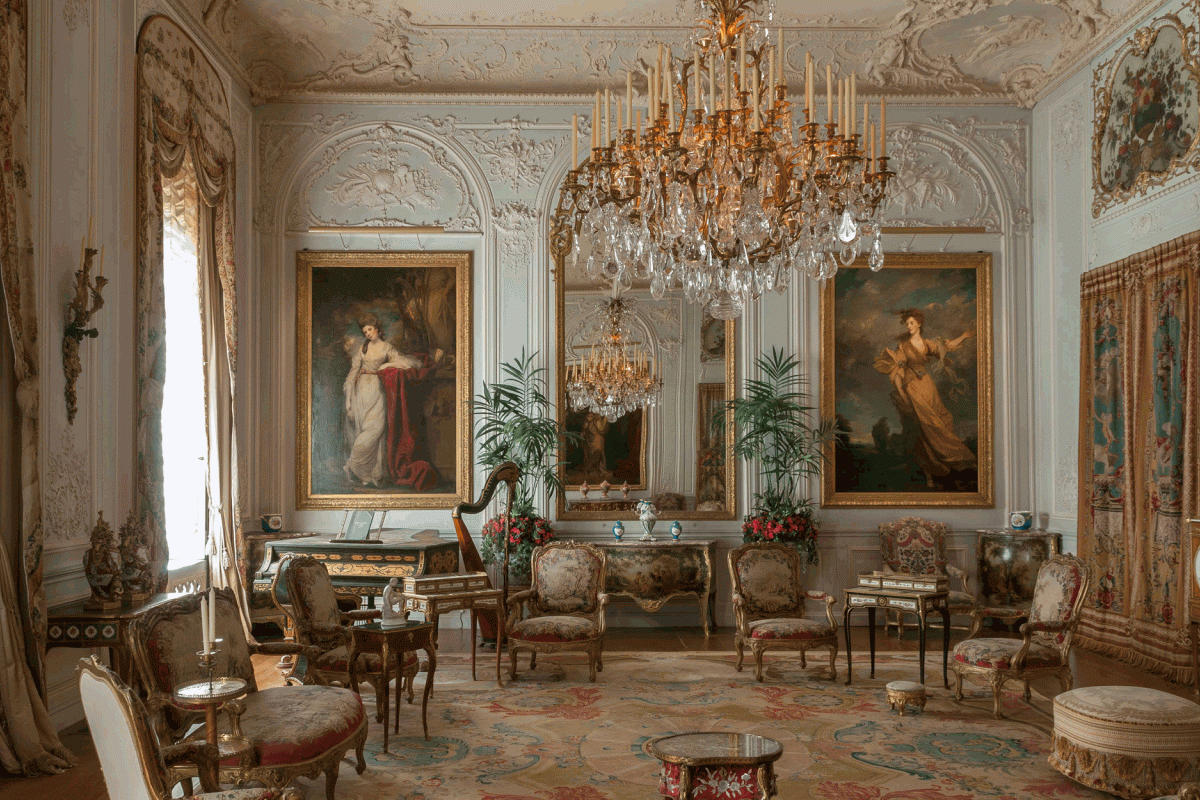
Where: Waddesdon, Aylesbury HP18 0JH
You can plan your visit online.
The British Rothschild Treasury was built in the mid-19th century by Baron Ferdinand. To build a country house in the French Renaissance style, similar to the palaces of the Loire Valley, he bought a plot of land in Oxfordshire and commissioned the architect Hippolyte Destyler to design the mansion. But the construction of the house went with difficulty: there was no water on the site, so they had to lay a pipeline, the soil did not allow to arrange a solid foundation – decided to cut from the top of the hill millions of tons of sand. It seemed that only the owner of the land saw the potential in the realization of such a complex project.
After seven years, the work at Waddesdon was finally completed and it was time for the first big party that the host had long dreamed of. The guests were amazed. The estate consisted of several towers and seventy rooms: most were furnished with furniture imported from the finest houses in France. The Rothschild collection was no less impressive: Dutch Old Master paintings and Renaissance treasures, magnificent English portraits by Gainsborough and Reynolds, eighteenth-century French boiserie, Savoneri carpets, tapestries, ceramics, and books.
Waddesdon’s collection was later enriched by a series of works, The Sleeping Beauty, created by Lev Bakst. The chief scenographer of the Russian Seasons painted the paintings commissioned by the Rothschilds for their London mansion in 1913, so the faces of the characters depicted on the canvases are identical to those of family members, friends and employees of the house.
Kettle’s Yard, Cambridgeshire.

Where: Castle St, Cambridge CB3 0AQ
You can plan your visit online.
One of the most vibrant collections of modernist art in England belonged to Jim Ede, former curator of London’s Tate Gallery. The collector’s home in Cambridge is the best testament to his belief that an art gallery or museum is a living space. In Ede’s case, the space was alive in the truest sense of the word: the works, carefully collected, donated or purchased by the curator, blended seamlessly into the interior of the house, whether it was the intimate space of the family’s rooms or the spacious halls of the library.
To house the entire contents of the collection, in the mid-1950s Jim and his wife Helen Ede purchased several dilapidated neighboring cottages and combined them into a single house. It was designed so that numerous guests could come and enjoy the art “without being embarrassed by the rigors of a museum.” In addition, every day, from two to four in the afternoon, the couple opened the house’s doors to Cambridge University students, inviting them to view masterpieces by Henri Gaudier-Brzeska, Constantin Brancusi, Joan Miró, Henry Moore, Barbara Hepworth, Lawrence Laurie, and other artists on their own.
In 1966, Jim Ede donated the house and its contents to Cambridge University. After an extensive restoration six years ago, it reopened its doors to art lovers. The current caretakers of the museum remain true to the philosophy of the house’s owners. The space is still going strong and its temporary exhibitions change regularly, attracting new talent to the Kettle Yard.
The full story of 14 historic houses in England is printed in a special Winter issue of #Englishhome . You can order your copy by clicking here.
